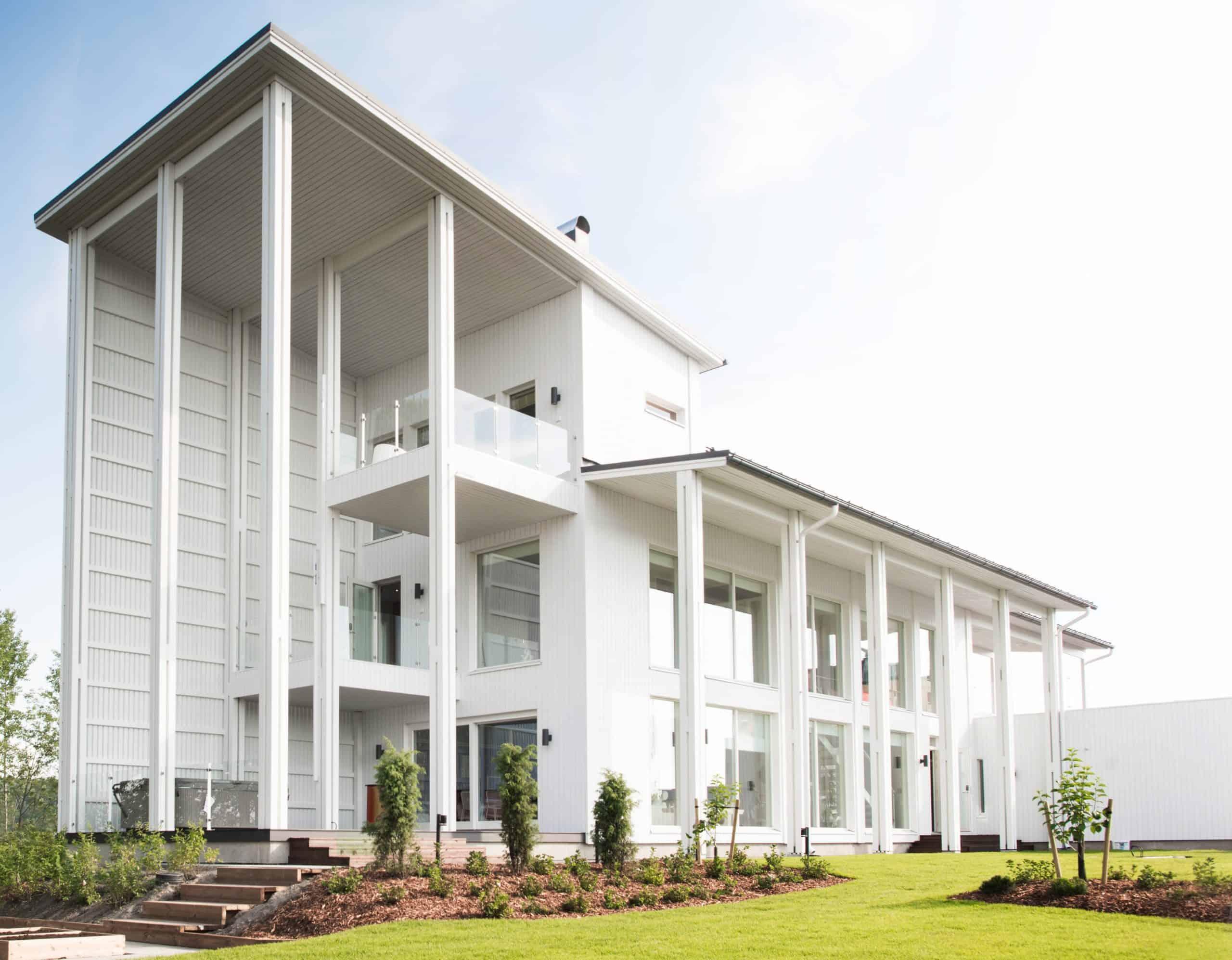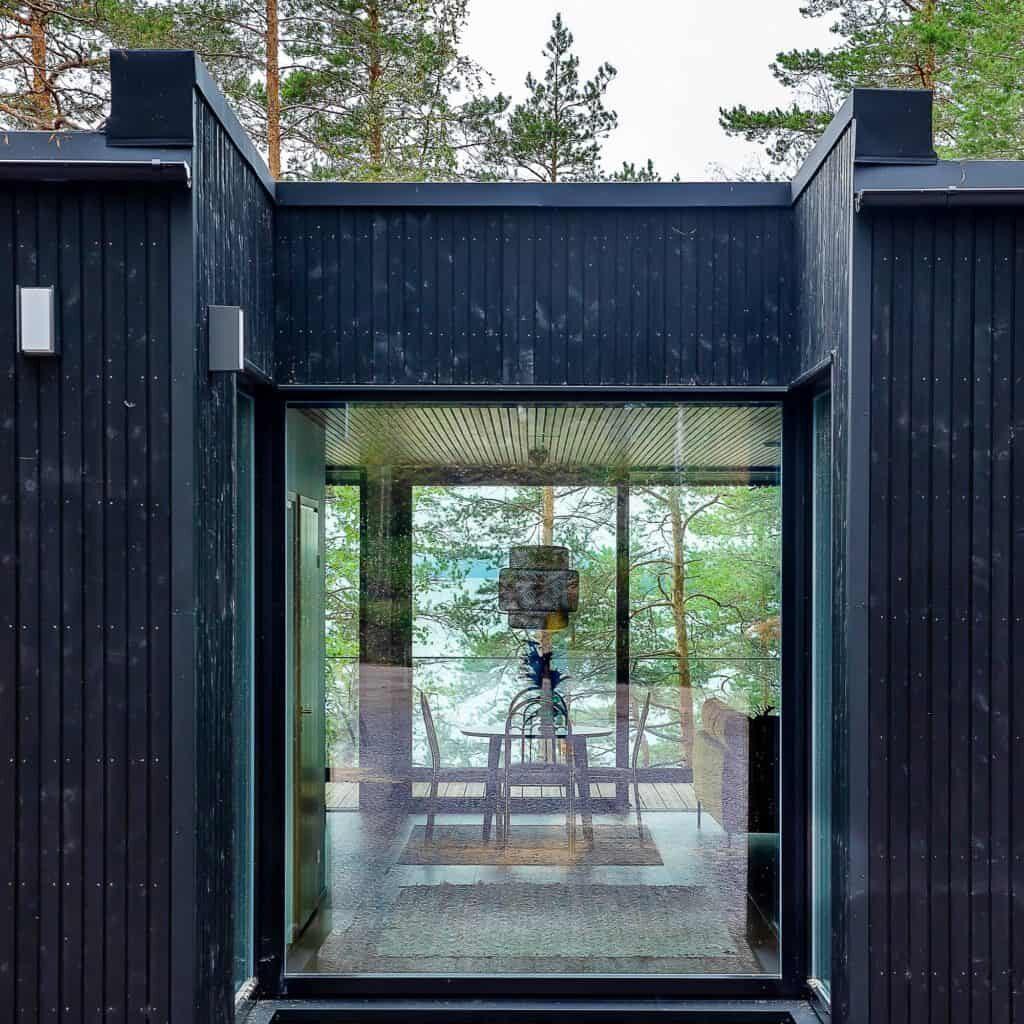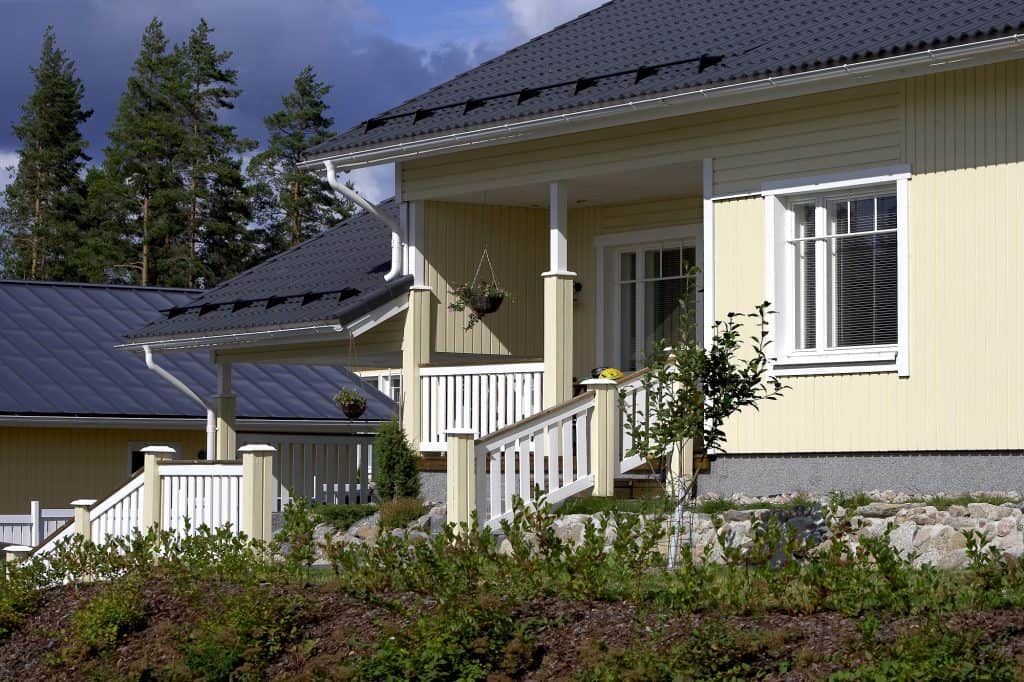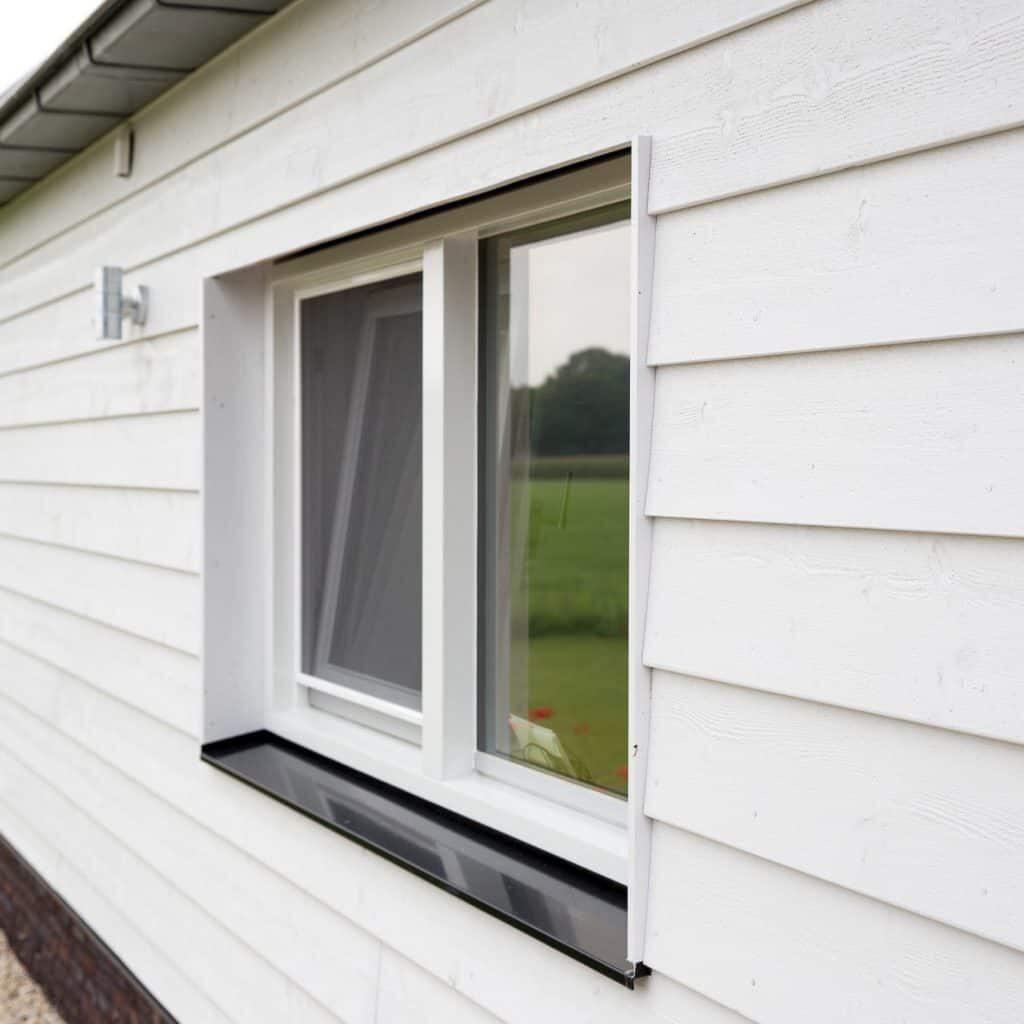Painting a house sounds like a simple job at first; get the scaffolding and start painting. In reality, there are several things to consider when painting the exterior of your house, and neglecting one of them can ruin the exterior of your house.
The risks of exterior painting are as much present in the initial painting of a house as in the "finishing" of the exterior cladding panels that are painted over. It is therefore important to know what kind of preparation and weather conditions are required for painting.
To make sure you get the job done, take note of the following.
Outdoor painting requires the right weather and good groundwork
A typical exterior painting of a detached house takes two professionals around 2-3 working days, so it can easily take a week for a less experienced painter. However, a week can stretch into a whole summer-long project if the painting weather is not favourable. In fact, the weather is the most important factor that painting outdoors requires.
Outdoor painting temperature and weather
The perfect temperature for painting outside is around +10 - +20°C. The weather should preferably be cloudy and the humidity below 80%. Rain is the most damaging factor for the quality of exterior painting. When it rains, the humidity is high and the paint does not adhere properly to the surface of the wood. Painting in sunshine is also undesirable. In hot sunshine, the paint dries too quickly on the panel and cannot form a hard film to protect the wood.
For this reason, you should always paint the shaded side of the house in sunny weather and not paint at all in rainy or wet weather. Also, make sure that good painting weather continues for a few days at a time, so that you can paint one side of your house in the same conditions. This way, the paint surface will look the same throughout the façade.
What happens if you paint outside in bad weather:
- In too cold weather (below +5°C), the paint does not work as it should
- In too much sun or too hot (+30°C) the paint dries too quickly and starts flaking
- In excessively humid weather (humidity above 80%), the paint does not adhere to the wood optimally and the maintenance interval is significantly reduced because the paint surface peels off in "sheets".
- Do not paint during the morning and evening humidity, when humidity is at its highest.
Plan your painting job so that you can paint the whole wall under the same conditions. Otherwise, your facade may look like this in years to come:
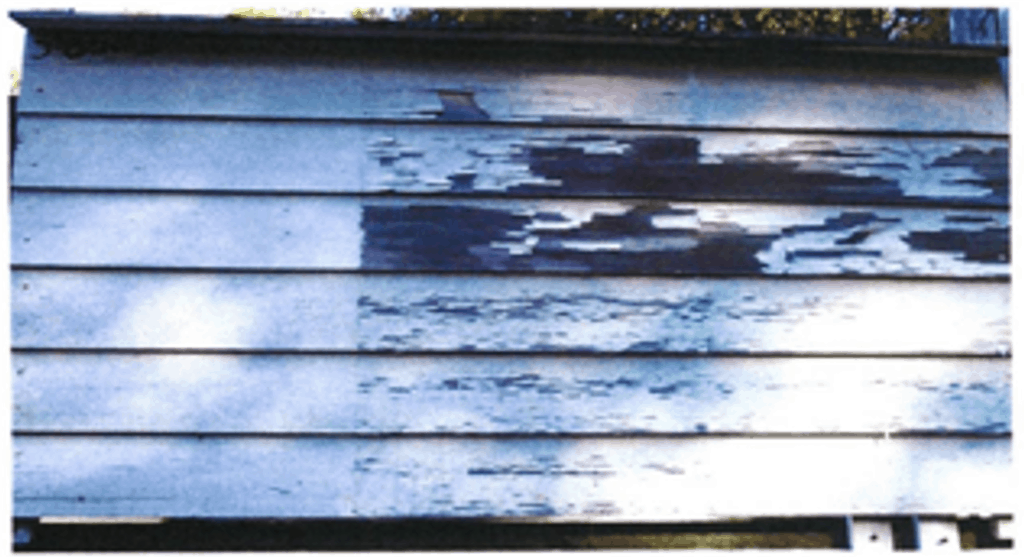
Do the groundwork carefully to avoid ruining the painting
Walls should be washed of dust and spores with water and mould remover before painting. There are two reasons for this. Firstly, the paint sticks to the wood much better when there is no dust between the wood and the paint. Secondly, mould spores that remain under the paint will start to develop a black spot on the wall if they are not washed off. Depending slightly on the type of paint, the spots may even emerge from under the paint the following summer. Paint does not kill mould.
If you are painting an old house, you will also need to scrub off any old paint that is peeling off, for example with a steel brush. It is therefore advisable to do the groundwork carefully, so that the exterior painting is done in a way that the paint surface is clean and durable.
Pre-painted exterior cladding panel eliminates the risks associated with exterior painting
A pre-painted cladding panel does not need to be painted on site, but can be installed directly in place. Depending on the architectural details of the house and the weather conditions, it may take 10-15 years before the panel needs to be repainted. On a hot south-facing wall, the paint surface will be more exposed than on the north-facing wall. During maintenance it is equally important to ensure good weather conditions and cleanliness of the surface to be painted.
By choosing a pre-painted cladding panel, you eliminate the risk of repainting and build a façade with a maintenance interval of at least 10 years.
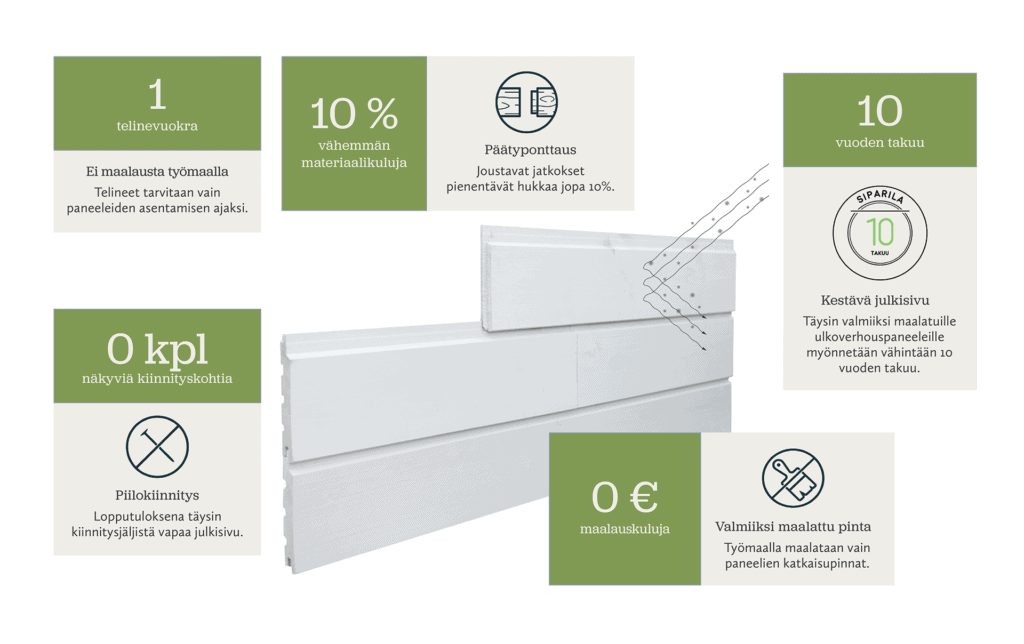
What are the other advantages of pre-painted cladding panels?
1) Save on the total cost of construction
A pre-painted exterior cladding panel is more expensive than a pre-painted or primed panel at the time of purchase. However, it is worth remembering that a pre-painted cladding panel requires a second coat of topcoat on site after installation, and a primed panel should be painted twice soon after installation to prevent moisture from damaging the wood.
For both intermediate and pre-painted panels, painting and scaffolding costs increase the overall construction costs and slow down the completion of the house. Pre-painted panels leave the summer weekends free, and summer holidays can be spent enjoying a holiday instead of scaffolding.
A pre-painted exterior cladding panel does not incur unexpected additional costs in terms of money or time, making it a cost-effective option.
2) Pre-painted cladding panels are risk-free
A pre-painted cladding panel does not need to be painted on site in the weather. It therefore eliminates the risk of both ruining the exterior finish and disrupting site schedules due to poor painting weather. Also, scaffolding is not required except for the duration of the panel installation. The project will proceed as planned and there will be no unexpected additional costs.
3) The panels have no visible nail holes, so water cannot enter the wood cell
Pre-painted cladding panels have better weather resistance than traditional panels. Pre-painted cladding panels are fixed with concealed fasteners, which prevents the paint surface from deteriorating and water from entering the wood cell through the nail holes. Concealed fixing is done so that the nail or hook is always hidden under the next panel.
4) A beautifully flat surface with hidden fixing
Pre-painted exterior cladding panels have an unbreakable and beautifully smooth finish. The nail heads are hidden under the next panel and the topcoat film that protects the wood is not broken. The façade enhances the appearance of the wood and the colour of the paint you choose. Traditional cladding panels are fixed from the top of the panel with nails, which means that the nail heads will become visible under the paint surface in about 3-5 years. With pre-painted and concealed cladding panels, this risk does not exist.
5) Multi-stage surface treatment protects the cladding panel
The pre-painted cladding panels undergo a multi-stage surface treatment. This ensures that the paint adheres firmly to the wood and does not flake. The factory finish also protects the panel from mould, moisture and UV radiation. An industrially painted panel will have a very durable surface.
Despite its simplicity, exterior painting is a methodical process that requires planning to ensure that the painted surface remains evenly beautiful and durable throughout the house.
